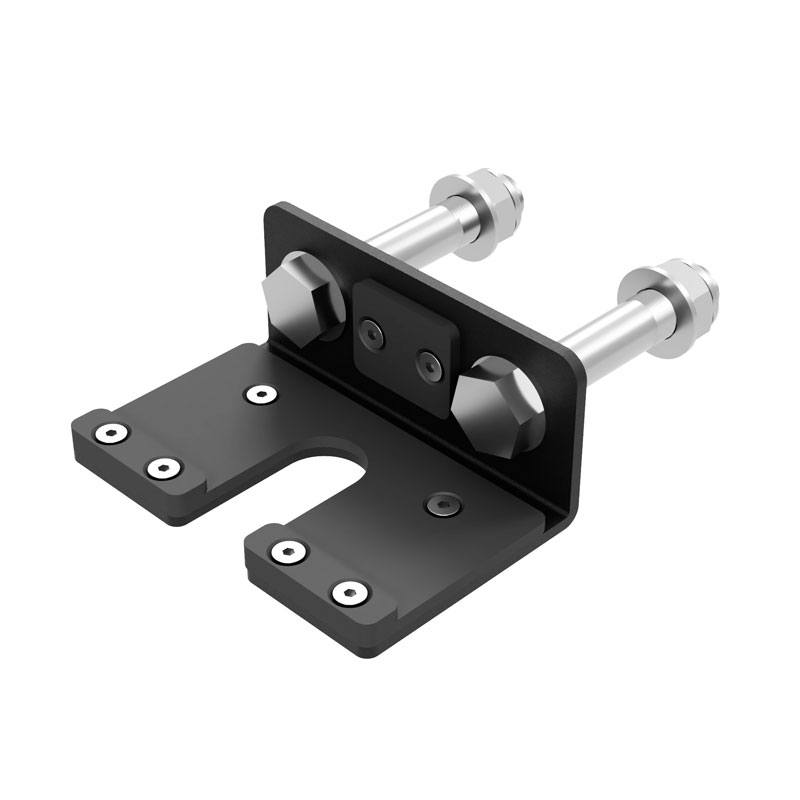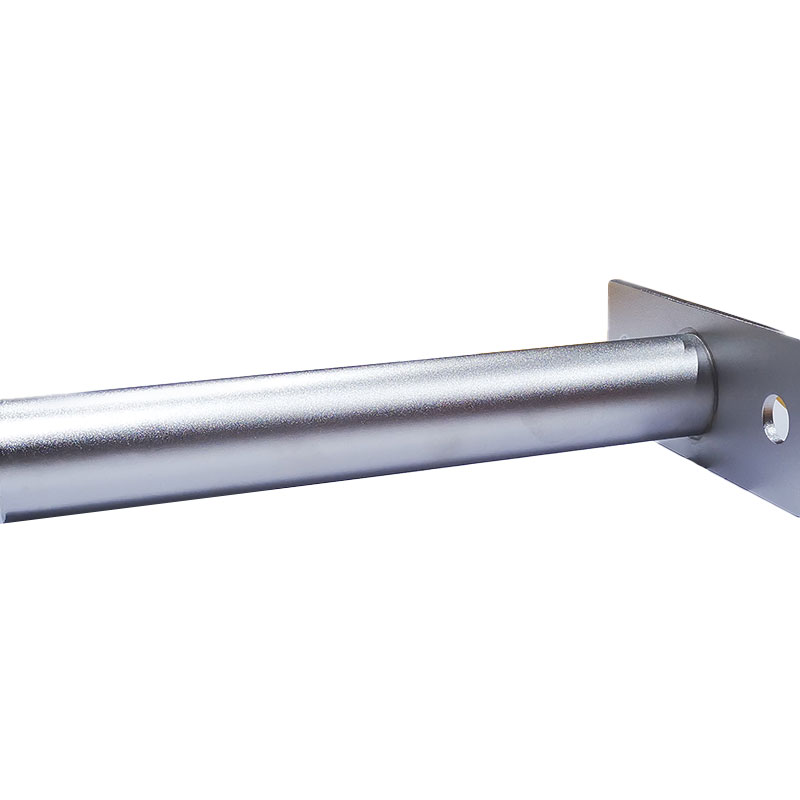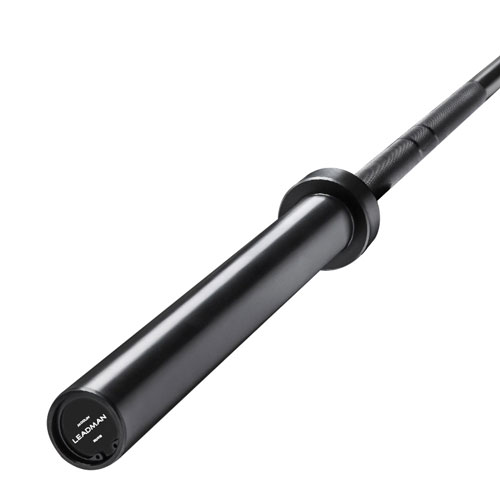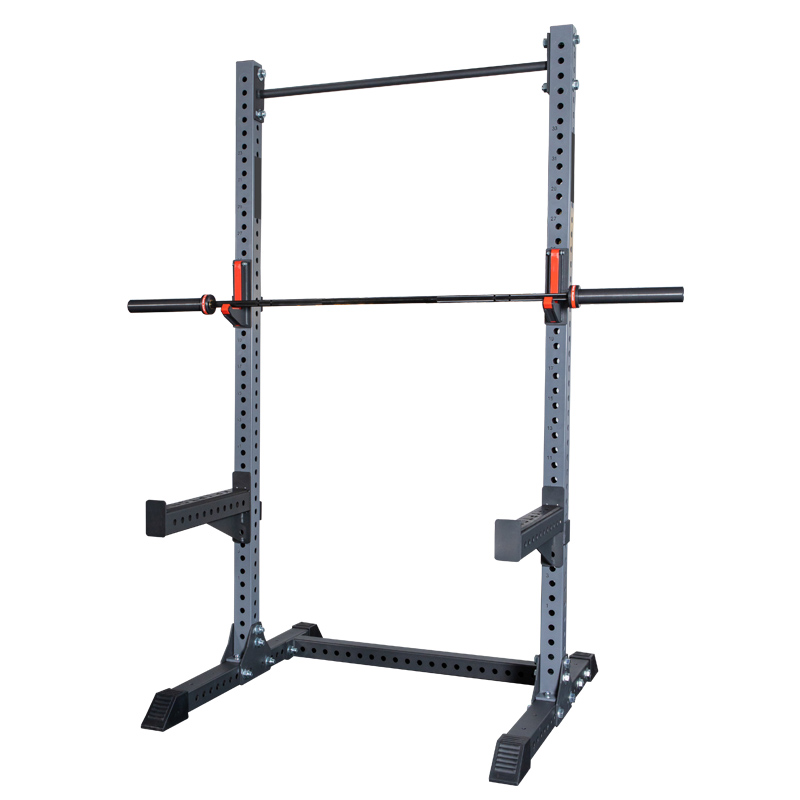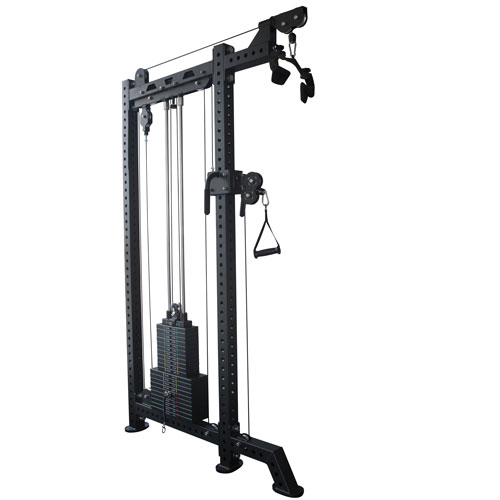Are Barbells 45 or 55 lbs
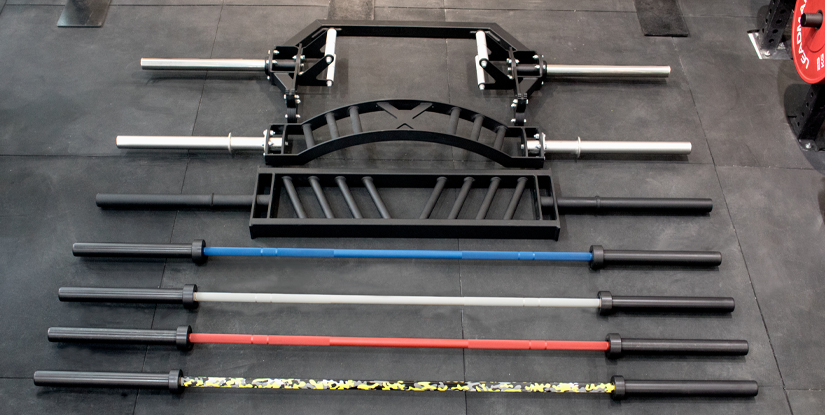
The barbell is the cornerstone of any weightlifting gym, providing a versatile platform for an endless array of exercises. Its iconic silhouette is instantly recognizable, but one of the most common questions surrounding these implements is the weight of a barbell. While the standard weight of a barbell may seem straightforward, there are actually several variations based on the barbell's type and construction. This comprehensive guide will delve into the world of barbells, exploring the weight standards, weight plate compatibility, sleeve diameters, and weights of different types of barbells.
Barbells are not just simple metal bars; they are precision-engineered tools designed to enhance strength training, powerlifting, and Olympic lifting. Whether you're a beginner or an advanced lifter, understanding the nuances of barbell weights and types can significantly impact your training effectiveness and safety. This guide will cover everything from the standard Olympic barbell to specialized bars like the EZ curl bar and trap bar, providing you with the knowledge to choose the right barbell for your fitness goals.
Barbell Standards
The International Weightlifting Federation (IWF) sets the global standards for barbells used in Olympic weightlifting competitions. These standards ensure uniformity and consistency across different platforms and competitions. The IWF specifies the dimensions, weight, and materials used in Olympic barbells, ensuring that athletes worldwide train and compete under the same conditions.
The IWF standards are not just about fairness; they also ensure safety. A standardized barbell reduces the risk of injury by providing consistent performance across different gyms and competitions. For example, the IWF mandates that Olympic barbells must have a specific tensile strength to withstand the heavy loads and dynamic movements of Olympic lifts like the snatch and clean and jerk.
Olympic Barbell
The Olympic barbell, designed specifically for Olympic lifts, adheres to strict specifications. It measures 2.2 meters (7.2 feet) in length and has a diameter of 28 millimeters (1.1 inches). The weight of an Olympic barbell is standardized at 20 kilograms (44.1 pounds). This weight distribution is designed to provide optimal balance and stability during Olympic lifts such as the snatch and clean and jerk.
Olympic barbells are engineered to withstand extreme stress. They are typically made from high-strength steel and feature rotating sleeves to reduce friction during lifts. The knurling on Olympic barbells is also standardized to provide a secure grip without causing excessive wear on the hands. These features make Olympic barbells the preferred choice for competitive weightlifters and serious athletes.
In addition to their use in competitions, Olympic barbells are also popular in commercial gyms and home gyms. Their versatility and durability make them suitable for a wide range of exercises, from squats and deadlifts to bench presses and overhead lifts. However, their weight and size may be intimidating for beginners, which is why many gyms also offer standard barbells.
Standard Barbell
The standard barbell, commonly found in most gyms, differs slightly from the Olympic barbell. It is shorter, measuring 1.8 meters (6 feet) in length and has a smaller diameter of 25 millimeters (0.98 inches). The weight of a standard barbell is typically 15 kilograms (33 pounds). This lighter weight makes it more suitable for general weightlifting exercises and for lifters who may not require as much weight resistance.
Standard barbells are often used for exercises like bench presses, squats, and deadlifts. They are also popular in home gyms due to their compact size and ease of use. While they may not have the same level of durability as Olympic barbells, standard barbells are still made from high-quality materials and can withstand regular use.
One of the key differences between standard and Olympic barbells is the sleeve diameter. Standard barbells have sleeves with a diameter of 25 millimeters, which means they are not compatible with Olympic weight plates. This is an important consideration when purchasing barbells and weight plates for your gym or home setup.
Weight Plates
Weight plates are the essential components that add resistance to the barbell. They come in various weights, allowing lifters to customize the load to their fitness levels and exercise goals. Below is a table summarizing the most common weight plate sizes and their corresponding weights in both kilograms and pounds:
| Weight (kg) | Weight (lbs) |
|---|---|
| 1.25 kg | 2.75 lbs |
| 2.5 kg | 5.5 lbs |
| 5 kg | 11 lbs |
| 10 kg | 22 lbs |
| 15 kg | 33 lbs |
| 20 kg | 44.1 lbs |
| 25 kg | 55.1 lbs |
Weight plates are typically made from cast iron, rubber, or a combination of materials. Rubber-coated plates are popular in commercial gyms because they are quieter and less likely to damage floors. Bumper plates, which are made entirely of rubber, are used in Olympic lifting because they can be dropped from overhead without causing damage.
When selecting weight plates, it's important to consider the type of barbell you will be using. Olympic weight plates have a larger center hole (50 mm) and are designed for Olympic barbells, while standard weight plates have a smaller center hole (25 mm) and are designed for standard barbells. Mixing and matching plates and barbells can lead to compatibility issues and potential safety hazards.
Diameter of Barbell Sleeves
The diameter of the barbell's sleeves determines the compatibility of weight plates. Olympic barbells have sleeves with a diameter of 50 millimeters (1.97 inches), while standard barbells have sleeves with a diameter of 25 millimeters (0.98 inches). This difference ensures that weight plates designed for Olympic barbells are not accidentally used on standard barbells.
The sleeve diameter is a critical factor in the design of barbells. Olympic barbells require larger sleeves to accommodate the larger center hole of Olympic weight plates. This design allows for smoother rotation of the plates during dynamic lifts like the snatch and clean and jerk. Standard barbells, on the other hand, have smaller sleeves that are compatible with standard weight plates.
When purchasing barbells and weight plates, it's essential to ensure that they are compatible. Using the wrong combination of barbells and plates can lead to instability during lifts, increasing the risk of injury. Always check the sleeve diameter and plate center hole size before making a purchase.
Weight of Olympic Barbell
As mentioned earlier, the standard weight of an Olympic barbell is 20 kilograms (44.1 pounds). This weight distribution is designed to provide optimal balance and stability during Olympic lifts such as the snatch and clean and jerk. The even weight distribution helps to prevent the barbell from wobbling or tilting during these dynamic movements.
Olympic barbells are designed to handle heavy loads and dynamic movements. They are typically made from high-strength steel and feature rotating sleeves to reduce friction during lifts. The knurling on Olympic barbells is also standardized to provide a secure grip without causing excessive wear on the hands.
In addition to their use in competitions, Olympic barbells are also popular in commercial gyms and home gyms. Their versatility and durability make them suitable for a wide range of exercises, from squats and deadlifts to bench presses and overhead lifts. However, their weight and size may be intimidating for beginners, which is why many gyms also offer standard barbells.
Weight of Standard Barbell
Standard barbells typically weigh 15 kilograms (33 pounds). This lighter weight makes them more suitable for general weightlifting exercises and for lifters who may not require as much weight resistance. The decreased weight also allows for easier handling and maneuverability, especially for beginners.
Standard barbells are often used for exercises like bench presses, squats, and deadlifts. They are also popular in home gyms due to their compact size and ease of use. While they may not have the same level of durability as Olympic barbells, standard barbells are still made from high-quality materials and can withstand regular use.
One of the key differences between standard and Olympic barbells is the sleeve diameter. Standard barbells have sleeves with a diameter of 25 millimeters, which means they are not compatible with Olympic weight plates. This is an important consideration when purchasing barbells and weight plates for your gym or home setup.
Weight of EZ Curl Bar
The EZ curl bar, also known as the curl bar, is designed specifically for bicep curls and tricep extensions. It features a curved shape that reduces strain on the wrists and elbows during these exercises. The weight of an EZ curl bar varies depending on its length and construction, but typically ranges from 10 kilograms (22 pounds) to 15 kilograms (33 pounds).
The EZ curl bar is a popular choice for isolation exercises that target the biceps and triceps. Its unique shape allows for a more natural grip, reducing the risk of wrist and elbow strain. This makes it an excellent option for lifters who experience discomfort when using a straight barbell for curls and extensions.
In addition to its ergonomic design, the EZ curl bar is also versatile. It can be used for a variety of exercises, including skull crushers, overhead tricep extensions, and even bent-over rows. Its compact size makes it a great addition to any home gym, especially for those who prioritize arm training.
Weight of Trap Bar
The trap bar, also known as the hexagonal bar, is designed to reduce stress on the lower back during heavy compound exercises such as squats and deadlifts. Its unique shape allows lifters to maintain a neutral spine position, which can be beneficial for individuals with lower back issues. The weight of a trap bar can vary significantly, ranging from 15 kilograms (33 pounds) for smaller models to over 30 kilograms (66 pounds) for heavy-duty models.
The trap bar is a versatile piece of equipment that can be used for a variety of exercises, including deadlifts, shrugs, and farmer's walks. Its design allows for a more natural lifting motion, reducing the strain on the lower back and making it a safer option for heavy lifting. This makes it an excellent choice for powerlifters, strongmen, and anyone looking to build strength without compromising their back health.
In addition to its ergonomic benefits, the trap bar is also easier to load and unload compared to traditional barbells. Its open design allows lifters to step inside the bar, making it easier to set up for exercises like deadlifts. This can save time and reduce the risk of injury when lifting heavy weights.
Custom Barbells
In addition to the standard barbell types, there are also custom barbells available to meet specific needs. These barbells can be made from different materials, such as stainless steel or titanium, and can have varying weights, sleeve diameters, and lengths. Custom barbells may be preferred by powerlifters, bodybuilders, and other specialized athletes who require unique equipment for their training.
Custom barbells offer a level of personalization that standard barbells cannot match. For example, powerlifters may prefer a barbell with a thicker diameter and more aggressive knurling to improve grip during heavy lifts. Bodybuilders, on the other hand, may opt for a barbell with a shorter length and lighter weight for isolation exercises.
The process of creating a custom barbell involves working closely with manufacturers to design a bar that meets your specific needs. This can include selecting the type of steel, the knurling pattern, the sleeve rotation, and even the finish of the bar. While custom barbells can be more expensive than standard options, they offer a level of performance and customization that is unmatched.
Conclusion
Understanding the different weights and types of barbells is crucial for selecting the appropriate implement for your fitness goals. Whether you're performing Olympic lifts, general weightlifting exercises, or specialized exercises, choosing the right barbell can enhance your performance and safety. The comprehensive information provided in this guide empowers you to make informed decisions when it comes to selecting and using barbells in your training regimen.
From the standardized Olympic barbell to the versatile trap bar, each type of barbell offers unique benefits and applications. By understanding the differences in weight, sleeve diameter, and construction, you can choose the right barbell for your specific needs. Whether you're a beginner or an advanced lifter, the right barbell can make all the difference in achieving your fitness goals.
FAQ About Barbells
1. What is the difference between an Olympic barbell and a standard barbell?
Olympic barbells are longer (2.2 meters) and heavier (20 kg) compared to standard barbells, which are shorter (1.8 meters) and lighter (15 kg). Olympic barbells also have larger sleeve diameters (50 mm) to accommodate Olympic weight plates.
2. Can I use Olympic weight plates on a standard barbell?
No, Olympic weight plates are designed for Olympic barbells, which have larger sleeve diameters. Standard barbells have smaller sleeves (25 mm) and are not compatible with Olympic plates.
3. What is the best barbell for beginners?
For beginners, a standard barbell is often recommended due to its lighter weight (15 kg) and easier handling. It is suitable for general weightlifting exercises and helps build foundational strength.
4. How do I choose the right barbell for my gym?
Consider the type of exercises you will be performing. For Olympic lifts, choose an Olympic barbell. For general weightlifting, a standard barbell may suffice. Custom barbells are ideal for specialized training needs.
5. What is the weight of a trap bar?
The weight of a trap bar can vary, typically ranging from 15 kg (33 lbs) for smaller models to over 30 kg (66 lbs) for heavy-duty models. It is designed to reduce stress on the lower back during heavy lifts.

